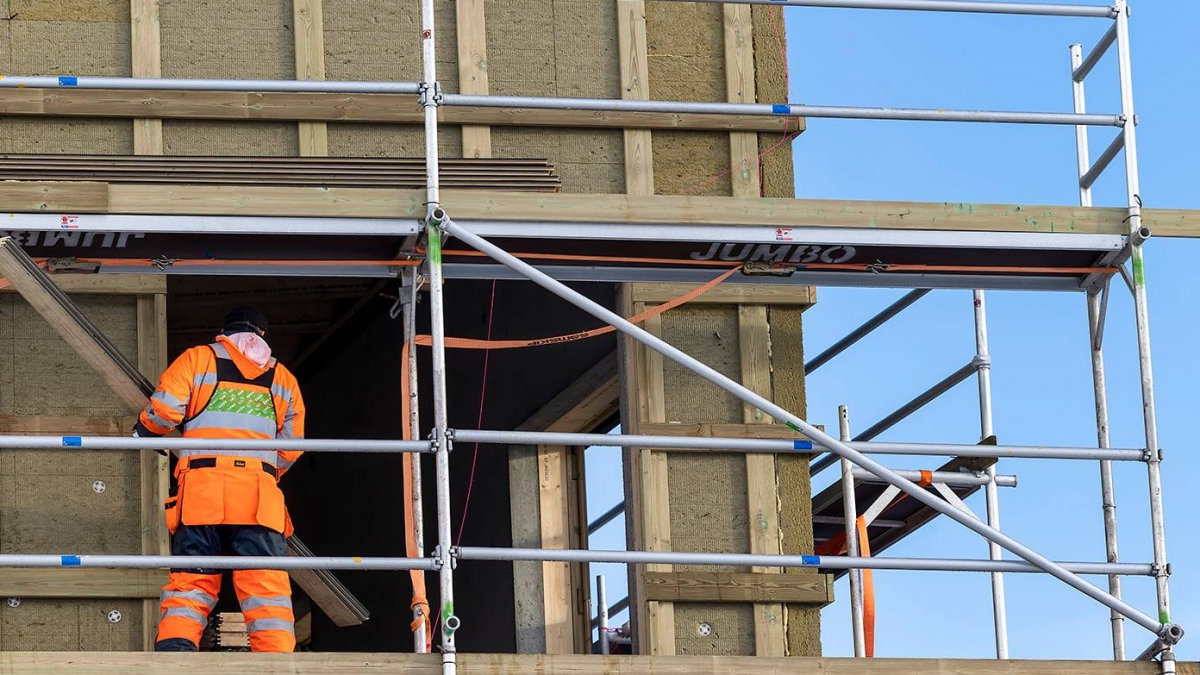Labour force, survey
04. Mar 2021
Faroese labour force still the most active in Europe

The labour force is an international measurement which counts the section of the population aged between 15 and 74 who are capable of providing work.
The activity rate – the labour force in % of the working-age population – is 84.3% averaged over both sexes, 86.1% for men and 82.4% for women.
This is the highest activity rate in Europe, and this applies to men, women, young and old alike.
The Faroese labour force has increased by just over 2,000 people in the past five years, spread evenly across the two genders. The labour force also increased slightly in 2020.
These are some of the key findings of the labour force survey conducted by Statistics Faroe Islands in November 2020. A detailed report with analysed figures can be found in the statbank. At the end of this article, you will find a short description of the labour force survey.
Included in the labour force are all employed individuals, including employees, independent traders, employers, unemployed people available for work and individuals who carry out unpaid work for family businesses. Not included in the labour force are young full-time students, people unavailable for work due to disease or reduced ability and people who have left the labour market due to age or other limitations. In statistical terms, these groups are classified as being part of the inactive population.
The table below shows the labour force and the activity rate in the main regions of the country. The activity rates in all these regions are well above the European average.
Vágar has the highest activity rate for men (89%) and Sandoy the lowest (75%). For women, Suðurstreymur and Norðstreymur have the highest activity rate (84%) and Sandoy has the lowest (78%).
In comparison, the average activity rate in Denmark and the United Kingdom is approximately 70%.
Europe’s highest activity rate
As previous labour force surveys have also shown, the Faroe Islands are again confirmed to have the biggest labour force in Europe relative to the population. Only Iceland comes close in this respect.
The chart below, compiled by Eurostat, compares the Faroe Islands with 35 other European nations.
With an 84% activity rate averaged over both sexes, the Faroe Islands lead the way, followed by Iceland (81%), Switzerland (76%) and Sweden (74%).
The average activity rate for the 27 EU member nations (excluding the UK) is 64%. The European nations with the lowest activity rate are Turkey and Italy, at 53% and 56% respectively.
For men, the Faroe Islands lead the way with an activity rate of 86%, followed by Iceland (85%). In Denmark, the figure is 74%. The EU average is 70%. The lowest activity rate for men is in Croatia, Belgium, France and Italy (64-66%).
At 82%, Faroese women have by far the highest activity rate in Europe. Iceland is second at 77%. Denmark’s activity rate is 66%. The EU average is 58%. Turkish women have the lowest activity rate at 34%, followed by Italy’s 47%.
In all countries except the Faroe Islands, activity rates for women are significantly lower than for men. In the Faroe Islands, the difference is only 4%. In Iceland and Denmark, this difference is 8%. The average difference in the EU is 12%. By far the greatest activity rate difference between the two sexes is in Turkey, with 72% for men and 34% for women.
High activity rates for young and old alike
Common to both sexes in the Faroe Islands and in Iceland is that young people in these countries are significantly more active in the job market than in the other European countries, and that the old generations remain significantly longer in the labour market than elsewhere.
In the Faroe Islands and Iceland, young people reach an activity rate of 70-75% before the age of 20, compared with 50% in Denmark and an EU average of about 20%.
This difference is even greater for the older generations, especially the oldest segment, the 65-74-year-olds, who in the Faroes have an activity rate of 50%, compared to 35% in Iceland, 15% in Denmark and a 10% EU average.
Faroese women also stand out in the survey. In the age groups 35 and over, they are a long way ahead of women in the other countries, for instance with an activity rate of more than 95% in the 45-55 age group and 45% in the 65-74 age group, compared to a 10% EU average in the 65-74 age group.
About the labour force survey
The labour force data is compiled in accordance with provisions from the International Labour Organization, an agency under the UN. This enables direct comparisons between Faroese figures and corresponding figures from other countries.
The size of the labour force is determined from a comprehensive survey of official registers such as the national register, the PAYE system, the tax statement register, the VAT register, the employment service and grant registers in the social and education ministries.
The findings are also based on surveys of approximately 1,000 individuals for whom there is insufficient data in the labour force registers. The labour force survey consists of answers from full-time residents in the Faroe Islands aged 15-74. Anyone who spent more than one hour on commercial work in the one-week survey period in November 2020 is classified as engaged in active employment, even if the work was unpaid. Unemployed people are only classified as such if they are actively looking for jobs or are prepared to start work within two weeks. Those who are neither employed nor unemployed are classified as being part of the inactive population.